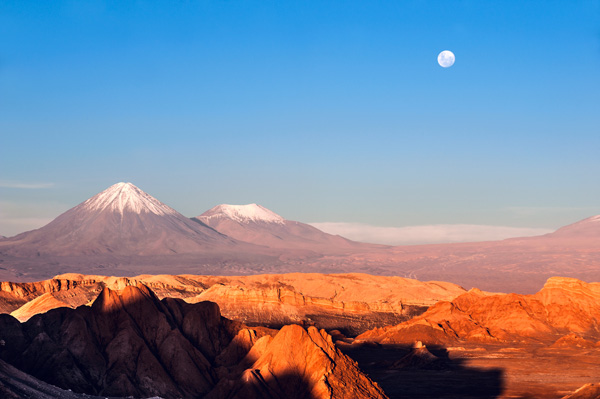02/15/2016

In what may be the oldest of the world’s deserts are many volcanoes, including those of the Cordillera de la Sal (Salt range) that skirts the east side of this oasis village. Named for its abundance of calcium sulfate, the Cordillera de la Sal gets its colorful striations from its mineral content. These colorful peaks make interesting photos, whether taken during the day, at sunset or under a full moon. At 13,800 feet, the starkly picturesque altiplanic lagoons are a destination that many visitors include in their San Pedro de Atacama itinerary. These brackish but beautiful high-elevation waters contrasted against a clear blue sky, with nearby snowcapped volcanoes mirrored in their waters, make for great photos and a memorable experience.
Submitted by Michelle on Mon, 02/15/2016 - 10:58pm
Chile's Colorful Birds, Rocks & Skies
Though some may think of deserts as desolate and devoid of interesting sights, to geologists and nature photographers, the Atacama is anything but. Clearly, barren is in the eye of the beholder. During travel to Chile here, it is impossible to view these unique landscapes without saying, “that would make a great shot,” even if you have never picked up a camera. And it isn’t just the renowned flamingo-attracting salt flat lagoons or the geometric patterns of the salt flats themselves near the town of San Pedro de Atacama that fascinate photographers. They are just the beginning.
In what may be the oldest of the world’s deserts are many volcanoes, including those of the Cordillera de la Sal (Salt range) that skirts the east side of this oasis village. Named for its abundance of calcium sulfate, the Cordillera de la Sal gets its colorful striations from its mineral content. These colorful peaks make interesting photos, whether taken during the day, at sunset or under a full moon. At 13,800 feet, the starkly picturesque altiplanic lagoons are a destination that many visitors include in their San Pedro de Atacama itinerary. These brackish but beautiful high-elevation waters contrasted against a clear blue sky, with nearby snowcapped volcanoes mirrored in their waters, make for great photos and a memorable experience.














